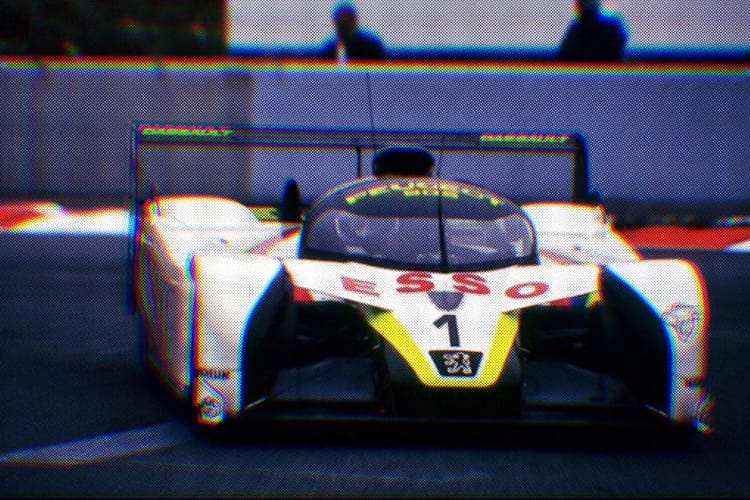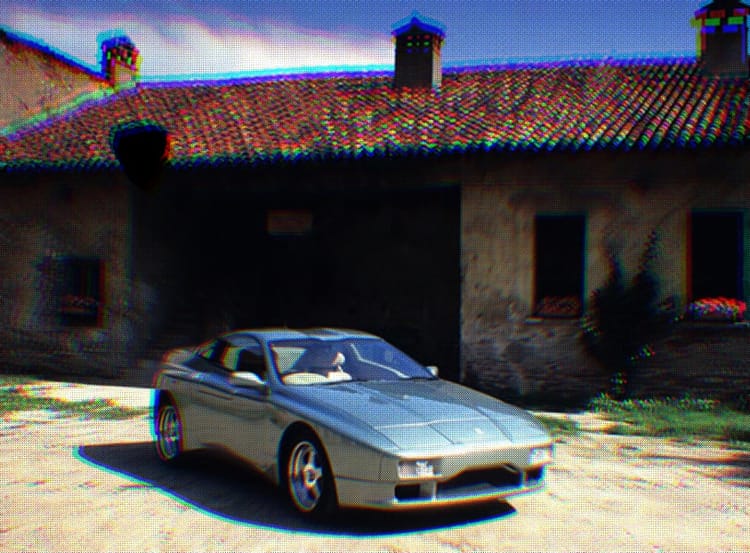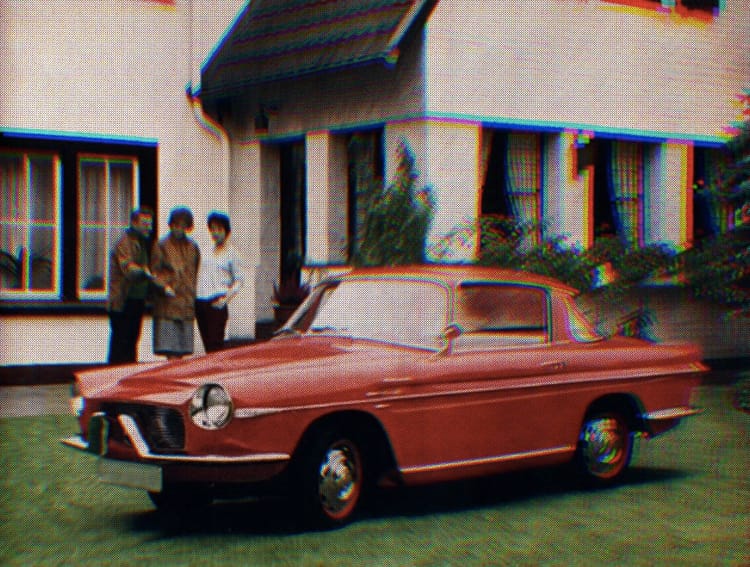Automobiles René Bonnet Missile
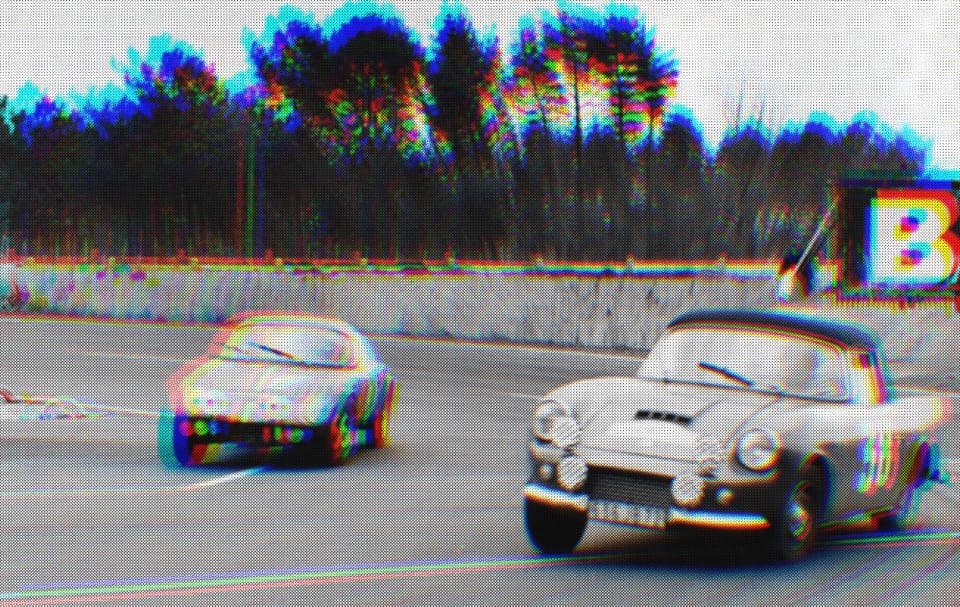
Stick with me, I have some French naming silliness to explain first.
DB (Deutsch-Bonnet) was a constructor of fine French sporting cars, run by two partners: Charles Deutsch and René Bonnet. These partners had a split, and the way I tell them apart is that the one whose initials reference aerodynamics — Cd — is the one who left automobile production and went on to racing cars, aero development, and leadership roles at Le Mans.
This car existed before and after the 1962 split — meaning, it exists as a DB and as a René Bonnet.
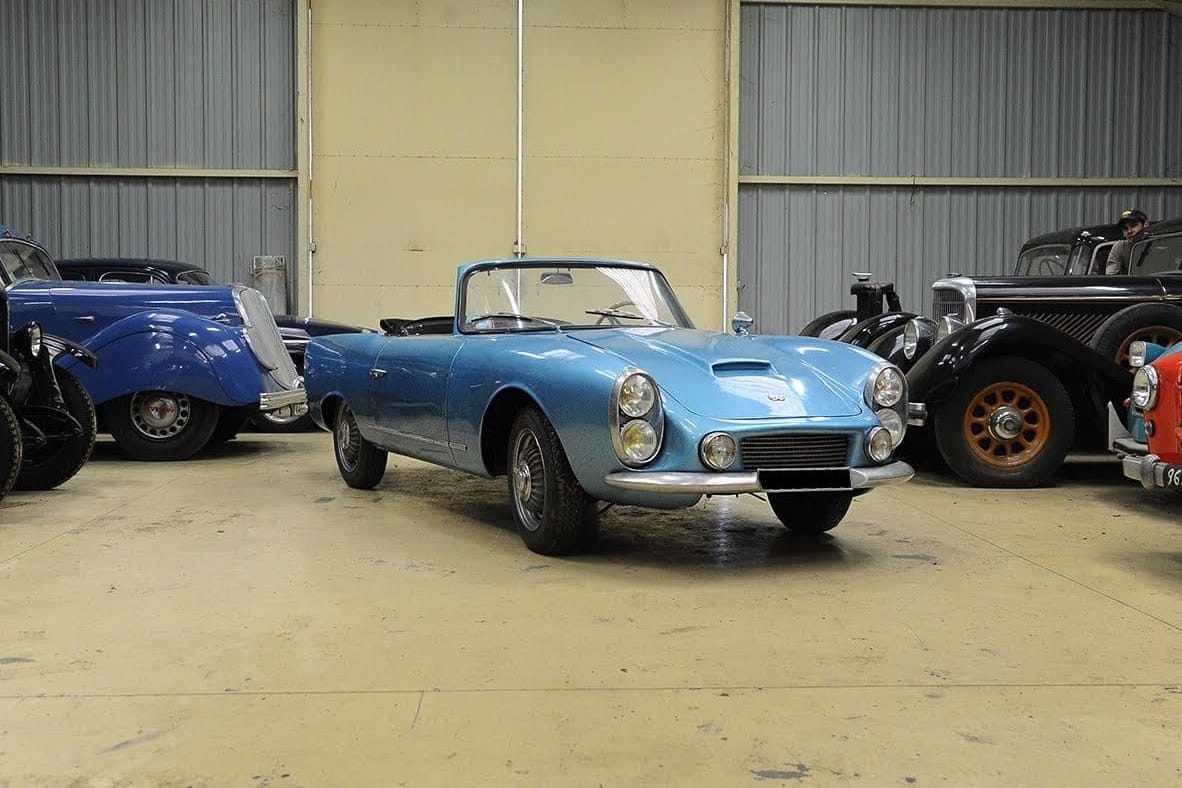
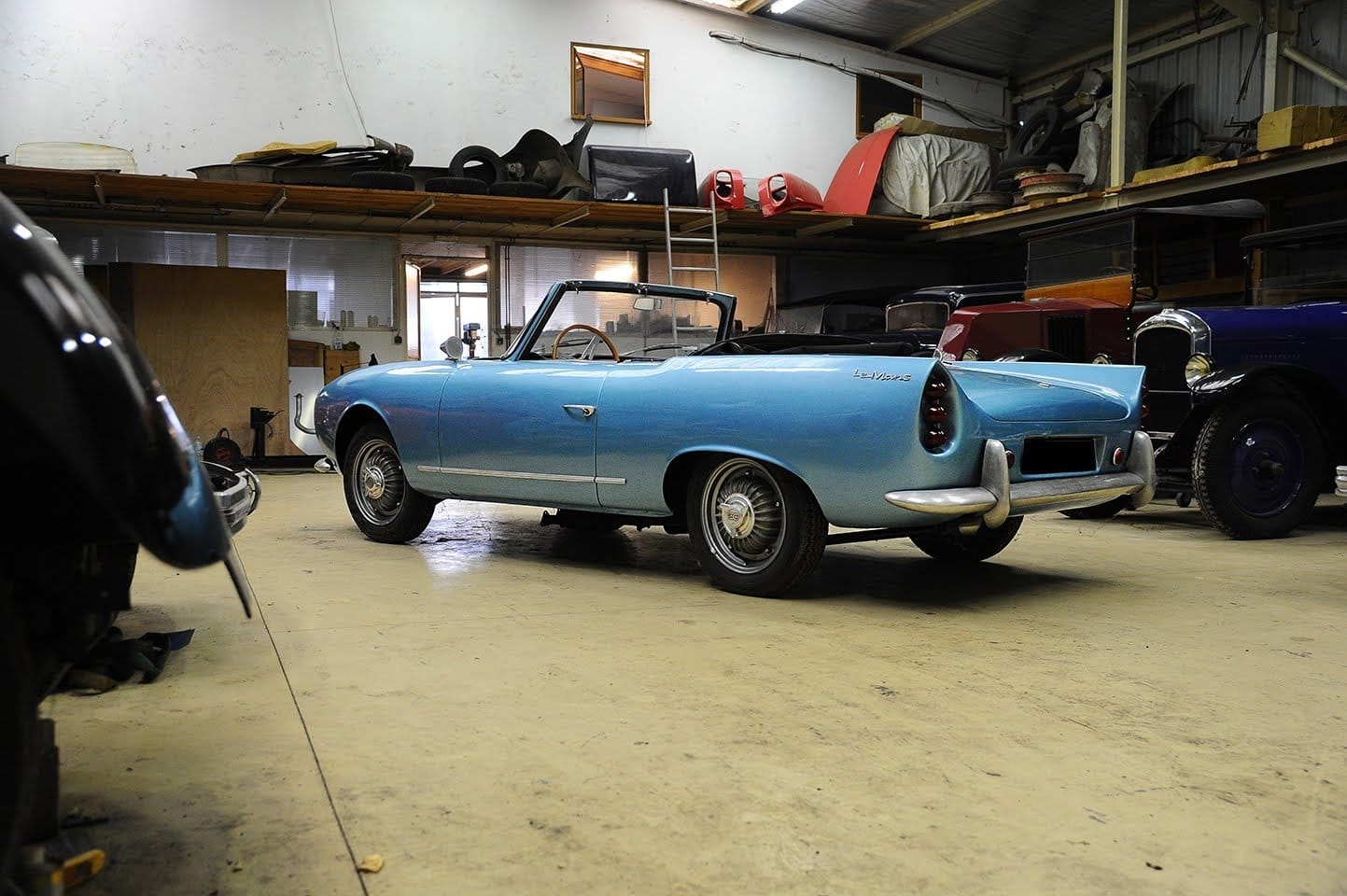
1961 DB Le Mans, and DB Le Mans Grand Luxe • DB, source unknown, classic driver
Prior to the split, the Missile was known as the DB Le Mans, a fibreglass, two-door sports car with front-wheel drive, that had entered the French market in 1959. It was followed by the DB Le Mans Grand Luxe around 1961, noticeable for its stacked headlights and fins.
How is it so cool?
With price and performance comparable to a Porsche 356, the range was an interesting choice in the burgeoning sports car market. First equipped with two-cylinder boxer engines from Panhard, this car, the Missile, was a hastily-arranged update of the Le Mans…but on Renault mechanicals.
With quality befitting a small operation and early fibreglass construction, there are few Missiles left today. They didn't know that few would survive on the eve of its launch at the 1962 Paris Motor Show, and could be pleased with the work done to update the car after Deutsch's departure.
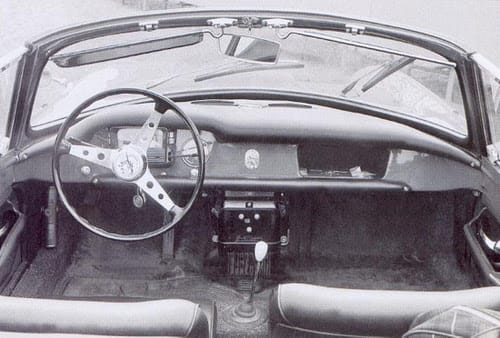
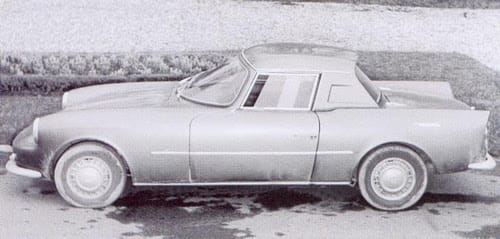
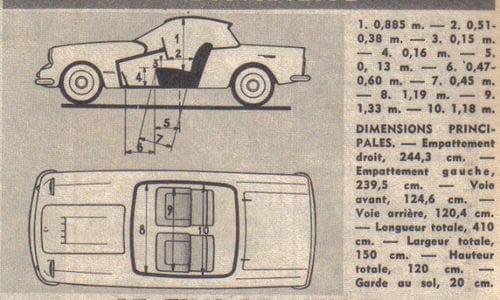
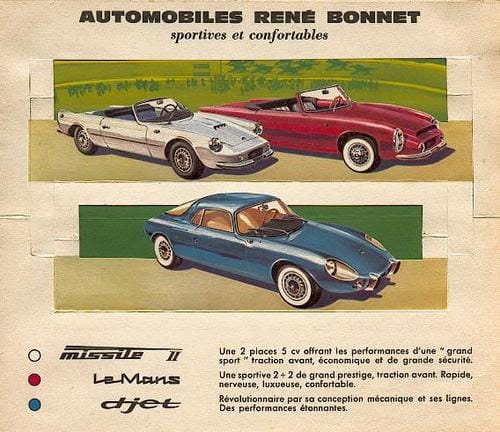
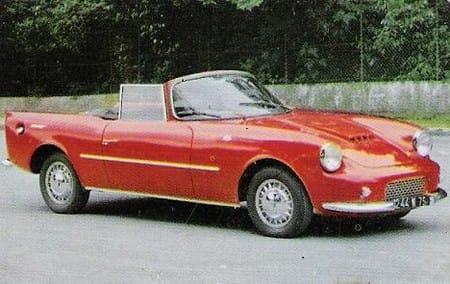
Now on a Renault R4 L platform, the fibreglass body enclosed a more powerful Renault Dauphine '1093' engine*, found in the more sporting Dauphine variant of the same name. With 55 horsepower and a four-speed transmission, the car now housed one of Renault's most punchy engines inside a swoopy open body. Underneath, R4 suspension and disk brakes from the R8 completed the mechanical updates.
Sadly, due in large part to these changes, customers began to feel that the soul of the car — now without its flat Panhard engine — was compromised.
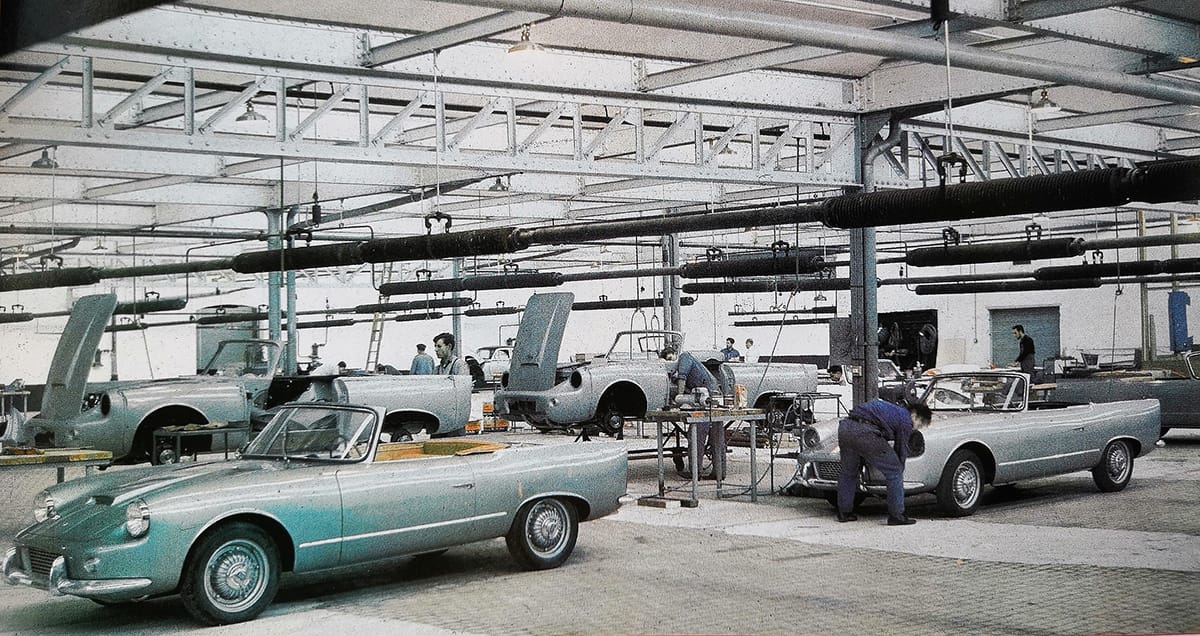

The car? It performed and was built even better than the earlier cars! Both the Missile and Le Mans remained in production until 1964, at which time Matra, impressed with the firm's mastery of fibreglass and composite bodywork, absorbed the firm and started to produce its own sports cars from 1965 — the Matra Djet started as a René Bonnet Djet.
The Missile may represent an awkward adolescence for small, French sports cars, but even today, the later René Bonnet Missile is an interesting time capsule to an era when few would look down on an innovative sports roadster…with, yes: front-wheel drive.
*Some missiles were delivered with the less powerful Dauphine 845-cc engine

